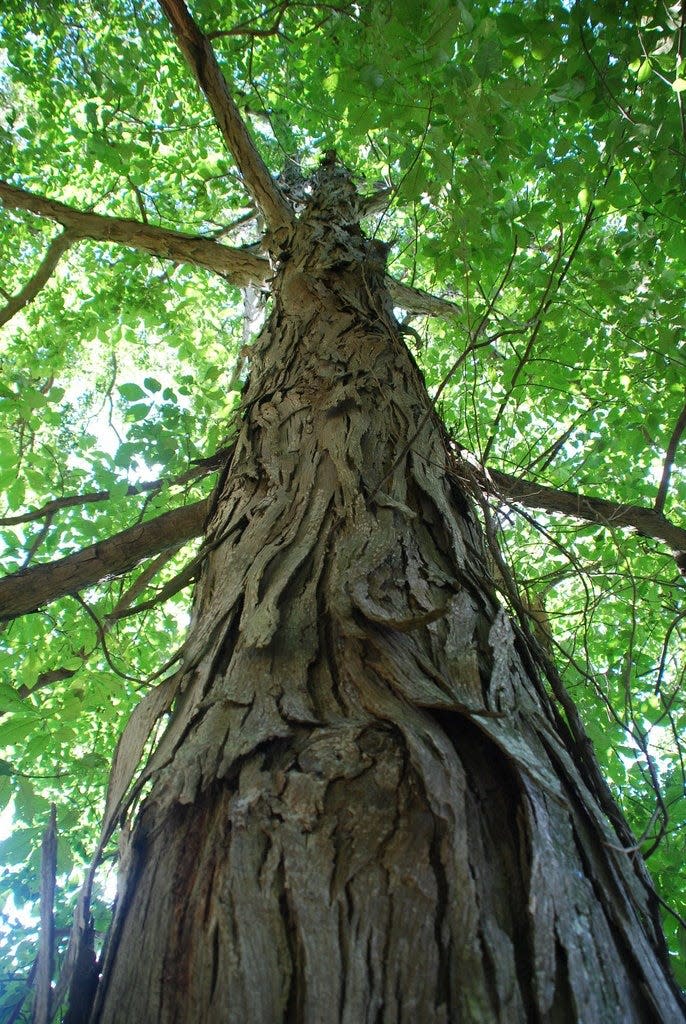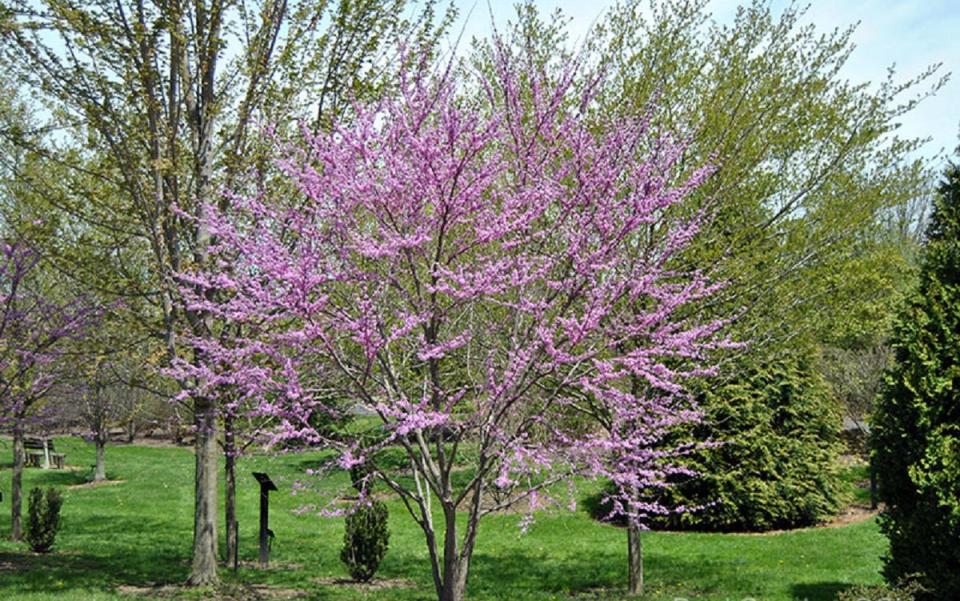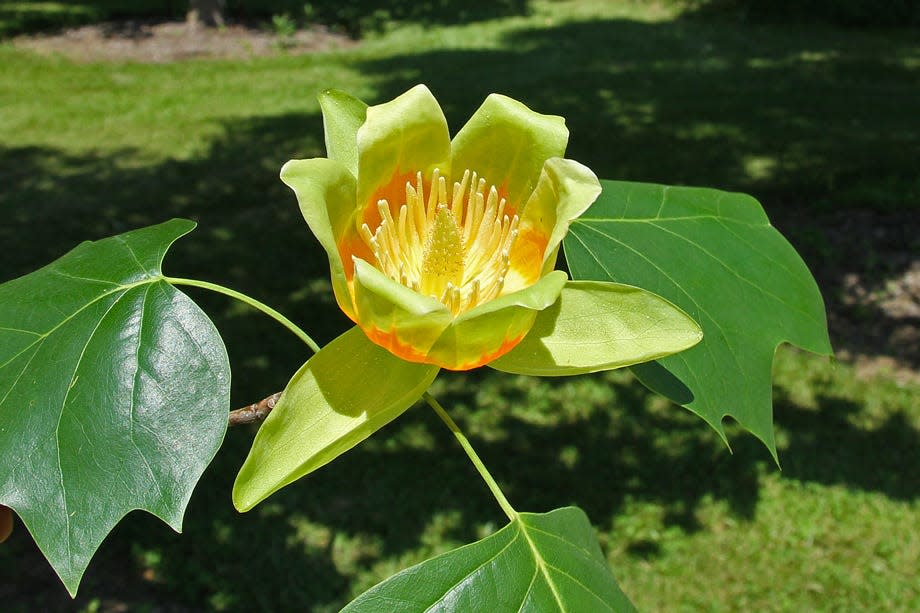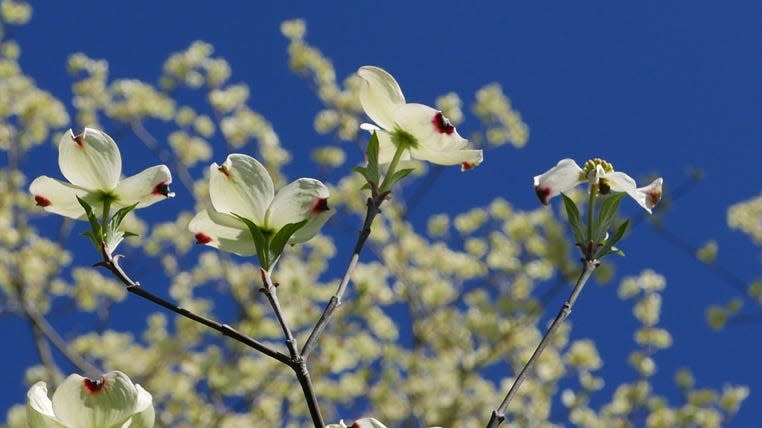It's not too late to plant these 10 trees for Ohio Native Plant Month

Arbor Day was observed throughout central Ohio this past Friday, and April is Ohio Native Plant Month, so what better time to plant one or more native Ohio trees in your home landscape? Trees are a critically important component of our ecosystem, providing economic, environmental, human health and quality of life benefits. Let’s look at my top 10 native trees for landscapes in central Ohio.
Oak (Quercus spp.) — There are several species of oaks native to Ohio and all are large trees that provide significant shade for structures and outdoor living spaces. Oaks also provide habitat and a food source for more species of insects and wildlife than other species of trees. White oak (Quercus alba) will thrive in wet areas in the landscape while Red oak (Quercus rubra) does best in well-drained soils.
Ohio buckeye (Aesculus glabra) — The state tree of Ohio is a medium-sized tree that supports many pollinators and birds with its nectar-rich, yellow-green flowers. The shiny brown nuts produced by the Ohio buckeye tree in late summer provide good luck charms, which many OSU Buckeye fans carry in their pockets.
More from Mike Hogan: These deer deterrents can lessen damage to your vegetables and flowers
Red maple (Acer rubrum) — One of the most popular shade trees in Ohio is the venerable red maple, beloved for its fast growth, thick shade and stunning fall color. Sometimes called swamp maple, this tree prefers moist soil conditions and can grow to 80 feet in height.
Flowering dogwood (Cornus florida) — Take a drive around Greater Columbus this week and you will see why this tree is on my top 10 list. This tree is currently in bloom in central Ohio and its large flowers are stunning each spring. This tree attracts birds and provides wonderful leaf color in fall along with bright red berries.
White pine (Pinus strobus) — This conifer is a tall tree, growing up to 80 feet tall when mature. It prefers full sun locations with moist, well-drained fertile soils. White pine is very susceptible to winter salt injury, so take care when planting this tree close to streets and roads, driveways and parking lots.

Eastern redbud (Cercis Canadensis) — This small tree tops out at 15 to 30 feet and features pea-shaped pink, purple or white flowers on its branches in early spring that remain in flower for up to a month. This tree makes a stunning focal point in any spring landscape. Its heart-shaped leaves provide foliar interest all summer long.
Pawpaw (Asmina triloba) — The only fruit tree native to Ohio, the pawpaw tree produces soft, light green fruit with a taste palate similar to mango and banana. This small tree is native to the edge of the forest and does best in areas of the landscape with filtered or dappled sunlight in the afternoon.
Eastern red cedar (Juniperus virginiana) — This conifer is a medium-size evergreen tree in the juniper family. Its flat foliage is similar to that of arborvitae and remains green all year long. This tree will thrive in any type of soil and any non-wet soil moisture condition. It does best in soils with neutral to acidic pH levels.

Tulip tree (Liriodendron tulipfera) — This large tree can grow to 90 feet tall and is also known as tulip poplar and yellow poplar. This tree has unique tulip-shaped leaves and tulip-like flowers that bloom in spring.
Shagbark hickory (Carya ovata) — This hickory tree is the tallest tree on my list, growing up to 120 feet tall when mature, and should be planted away from homes and other structures. This is a great shade tree, and its peeling bark provides visual interest all year long.

Right plant, right place
The key to success with planting trees (or any plant, for that matter) is to locate the right tree in the right place by matching specific trees with the conditions of the location in which they will be planted.
If you wish to plant a tree in the curb strip in front of your house, resist the temptation to plant “edge-of-woodland” species such as eastern redbud, dogwood or pawpaw, which all grow best in filtered sunlight.
If you wish to plant a tree in a location of the yard which drains slowly, consider planting a species that will tolerate extended periods of moist soils, such as red maple.
Be sure to choose the correct size tree for the location in which you will plant the tree. For locations close to the home, choose small to medium-sized trees such as eastern redbud, Ohio buckeye and pawpaw. Large shade trees such as maples, oaks, tulip tree and shagbark hickory should all be planted in large, open spaces at least 35 feet from the home, other structures or overhead power lines.

More from Mike Hogan: Top 10 tips for growing a better veggie garden
Proper planting is critical
When digging the planting hole for a tree, dig the hole two to three times wider than the diameter of the root ball. The depth of the planting hole should be 2 or 3 inches less than the height of the root ball since most clay-based Ohio soils are somewhat poorly drained, which requires the top of the root ball to be located 2 or 3 inches above grade of the planting area.
When planting trees with their roots wrapped in burlap, be sure to remove any string, nails, wire and even the burlap once the root ball is placed into the planting hole, as these materials can constrict root growth and even girdle or strangle the plant. Roots matted at the bottom or circling the roots of trees grown in plastic containers should be cut and removed or straightened, if possible, to prevent girdling. Be sure to remove any plant tags attached to the tree with wire or nylon twine, which could eventually girdle stem tissue.
When backfilling the planting hole, mix an organic soil amendment such as compost or peat moss with the soil removed from the hole at a rate of two-thirds soil and one-third organic amendment. A high-phosphorous fertilizer such as 5-10-5 can be added to the backfill at planting at a rate of one half-pint of fertilizer per bushel of backfill soil. Tamp the backfill soil firmly but do not compact it tightly by standing on the backfill.
Mike Hogan is an Extension educator, Agriculture and Natural Resources, and associate professor with Ohio State University Extension. hogan.1@osu.edu
This article originally appeared on The Columbus Dispatch: Top ten Ohio native trees to plant in your home landscape

